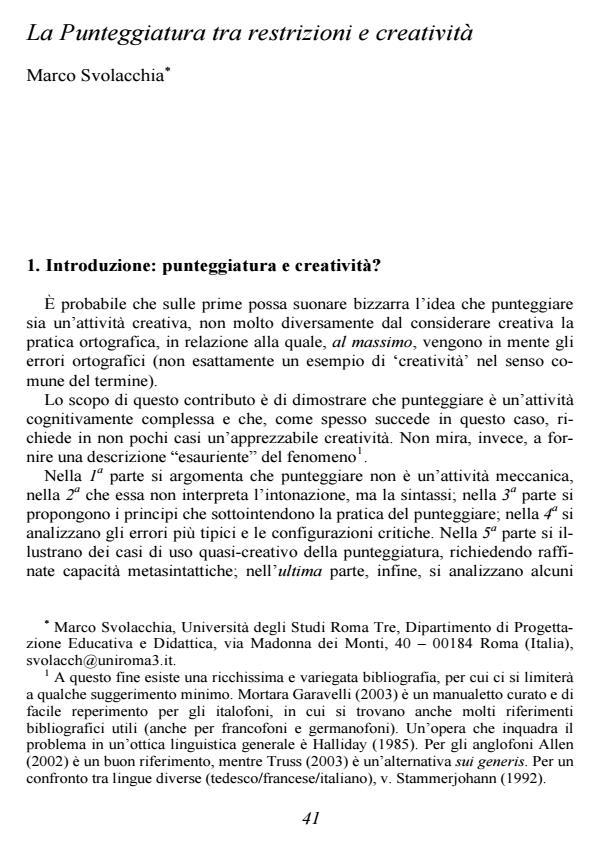La Punteggiatura tra restrizioni e creatività
Titolo Rivista CADMO
Autori/Curatori Marco Svolacchia
Anno di pubblicazione 2007 Fascicolo 2007/2
Lingua Italiano Numero pagine 30 P. 41-70 Dimensione file 391 KB
DOI
Il DOI è il codice a barre della proprietà intellettuale: per saperne di più
clicca qui
Qui sotto puoi vedere in anteprima la prima pagina di questo articolo.
Se questo articolo ti interessa, lo puoi acquistare (e scaricare in formato pdf) seguendo le facili indicazioni per acquistare il download credit. Acquista Download Credits per scaricare questo Articolo in formato PDF

FrancoAngeli è membro della Publishers International Linking Association, Inc (PILA)associazione indipendente e non profit per facilitare (attraverso i servizi tecnologici implementati da CrossRef.org) l’accesso degli studiosi ai contenuti digitali nelle pubblicazioni professionali e scientifiche
The paper argues that punctuation far from being a rule of thumb operation (a) relies heavily on syntactic awareness, and (b) either permits or requires a creative usage. As a general background to the discussion, two principles are proposed which underlie the rules and practice of punctuation (Parsing Criterion, and ‘Consistency Criterion’). Some critical cases are examined, which lead to the notion of cognitive opacity in syntax. Some other cases are brought to attention which illustrate to what extent syntactic awareness is in order to produce good punctuation. Finally, some aspects are discussed which demand a genuinely creative usage of punctuation, either related to stylistic variation (tempo of reading) or to some domains of syntax which are apart from any known dogma or practice. As for the educational implications, evidence from punctuation strongly confirms that written language is not learnt as spontaneously as spoken language is, and that improvement in (and therefore the teaching of) linguistic awareness is a key requirement for good writing. Keywords written language, punctuation, parsing, consistency, creativity
Marco Svolacchia, La Punteggiatura tra restrizioni e creatività in "CADMO" 2/2007, pp 41-70, DOI: